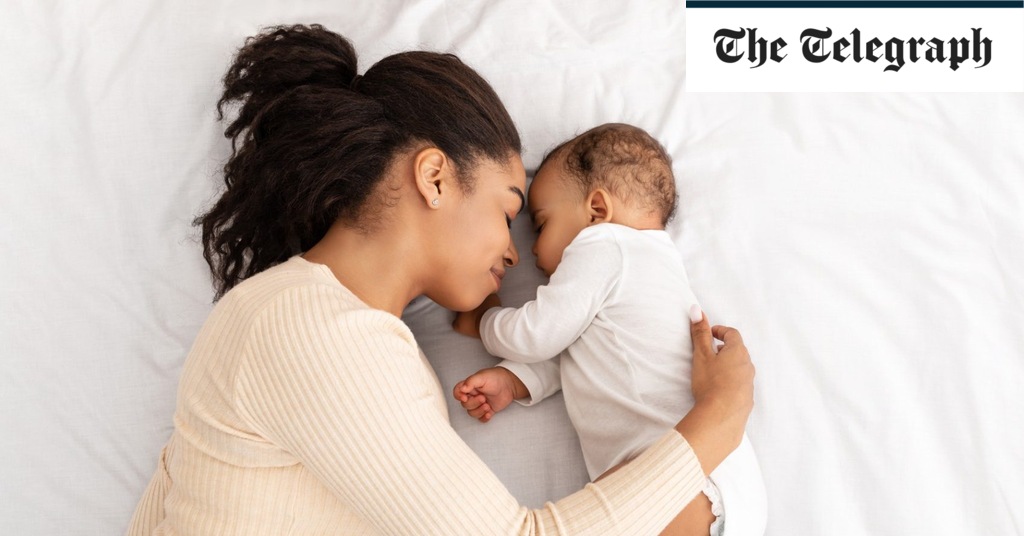Whether through chance or intention, all weary parents will inevitably find themselves co-sleeping with their infant at some point: perhaps drifting off on the couch while the baby rests on their chest, or stealing a few extra minutes of sleep in the morning while nestled side by side in bed.
In recent times, with the rise of attachment parenting philosophy advocating for a strong parent-child bond, co-sleeping has become increasingly prevalent. A recent survey conducted by The Lullaby Trust revealed that nine out of ten new parents choose to co-sleep with their baby.
While co-sleeping offers its advantages, recent data from Scotland’s prosecution service indicates that 19 infant deaths last year were linked to sharing a bed with a parent. Shockingly, one in four sudden infant deaths were attributed to co-sleeping. Alarmingly, only 4 out of 10 parents received guidance from healthcare professionals on reducing the risk of sudden infant death syndrome (SIDS) associated with co-sleeping.
Despite the risks, many tout co-sleeping as a preferred practice. A post on Tiffany Belanger’s Instagram account, cosleepy, with 119k followers, champions the right of parents to co-sleep safely with their infants, sharing annotated images demonstrating best practices.
Lots of parents make a conscious choice to co-sleep
Credit: getty
Anthropologist James J. McKenna has lauded the benefits of co-sleeping, highlighting how the physiological aspects of both parents and infants are positively influenced when they share a sleeping space. Research indicates that co-sleeping can lead to synchronization of heart rates, brain waves, sleep patterns, and even hormone levels, such as testosterone, which tends to decrease in males who co-sleep. Lower testosterone levels are associated with more sensitive and responsive parenting behaviors, potentially enhancing paternal caregiving.
Andrea Grace, a baby and child sleep consultant, notes the shift towards viewing co-sleeping as a lifestyle choice. In today’s landscape, parents prioritize attachment parenting and mental health, aiming to foster secure attachments from the outset, a departure from the cry-it-out method popularized in the 1990s by Richard Ferber.
The Royal College of Midwives underscores the inconsistent adherence to safe sleep guidelines among parents, raising questions about the widespread practice of co-sleeping.
What is co-sleeping?
Grace clarifies that when health professionals refer to co-sleeping, they primarily mean bed-sharing, as opposed to using co-sleeping cots that attach to the parental bed. The latter provides a separate sleep surface for the baby, termed “close sleeping.”
While some parents plan to co-sleep, Grace observes that most parents eventually resort to it out of necessity, especially when infants struggle to settle at night. Infants often find comfort and security when in close proximity to a parent.
Is it safe to co-sleep with a baby?
Although The Lullaby Trust recommends infants sleep in a separate cot for the first six months to reduce the risk of SIDS, statistics reveal that nine out of ten parents opt for co-sleeping.
“Co-parenting has become more popular as people grow thoughtful about attachment parenting” Credit: getty
Research over the past two decades has consistently linked shared sleeping surfaces with an increased risk of SIDS, influenced by various factors related to the sleeping arrangement and individuals involved.
When not to co-sleep
Certain conditions make co-sleeping unsafe, such as premature birth, low birth weight, parental smoking, alcohol consumption, drug use, high infant temperature, or sleeping on a sofa or armchair.
Co-sleeping more safely: positions and tips
For those considering co-sleeping, Grace recommends providing the baby with their own space on the bed, ensuring a safe sleeping environment free of hazards like pillows or excessive bedding. Maintaining a cool room temperature and keeping pets and other children away from the sleeping area are also crucial safety measures.
How to transition away from co-sleeping
Grace advises establishing a bedtime routine and assisting the baby in falling asleep independently in their own sleep space while ensuring your presence nearby. Consistency and patience are key when transitioning away from co-sleeping, maintaining a calm and nurturing environment for the baby.
Remember to greet them warmly in the morning with affection and closeness.

